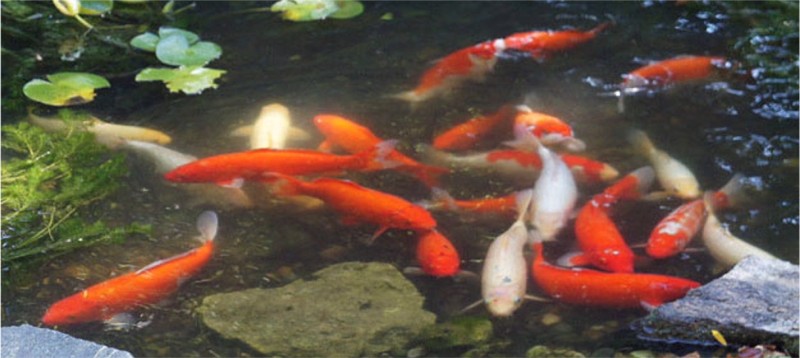Koi - Cyprinus carpio carpio koi


Habitat:
The common carp is widely believed to have originated from the Caspian Sea with natural habitat surrounding the North, Baltic, Mediterranean, Black, Azov, Caspian and Aral Sea basins. The common carp, as a food fish with the ability to survive and adapt to many different climates and waterways, was bartered and spread to many different areas, including North America, Africa, Europe, and Asia. Wild populations of the common carp now exist in those four continents and South America. Natural color mutations of these carp would have occurred across all populations. However, earliest records of carp with distinct colors have been found in Japan. Depictions of carp or 'koi' with different color variations have been found on 18th century Japanese drawings and paintings. The ornamental cultivation of carp originated in the Niigata region of Japan during the Japanese Edo Period.
Range:
Koi have been accidentally or deliberately released into the wild in every continent except Antarctica. The Japanese name for Koi is Nishikigoi. Nishikigoi were developed by the Japanese over 200 years ago.
Features:
Koi have many different colors. Some of the major colors are white, black, red, yellow, blue, and cream. Koi's bright colors put them at a severe disadvantage against predators; a white-skinned Kohaku is a visual dinner bell against the dark green of a pond. Herons, kingfishers, raccoons, cats, foxes, and badgers are all capable of emptying a pond of its fish.
Life Expectancy:
If kept properly, koi can live about 30–40 years. Some have reportedly lived up to 200 years
Diet:
Koi are an omnivorous fish and will often eat a wide variety of foods, including peas, lettuce, and watermelons. Koi food is designed not only to be nutritionally balanced, but also to float so as to encourage them to come to the surface. When they are eating, it is possible to check koi for parasites and ulcers. Koi will recognize the person feeding them and gather around him or her at feeding times. They can be trained to take food from one's hand. In the winter, their digestive system slows nearly to a halt, and they eat very little, perhaps no more than nibbles of algae from the bottom. Their appetite will not come back until the water becomes warm in the spring. When the temperature drops below 50 degrees Fahrenheit (10 °C), feeding, particularly with protein, is halted or the food can go rancid in their stomach, causing sickness.
Status:
Listed as vulnerable on the IUCN Red List.
Prices
- Adult (13 and over)$12.50
- Child (2 - 12)$9.00
- Child (1 and Under)FREE
- Senior (65+)$11.50
- Active Military$11.50
We begin transferring animals to evening (off exhibit) holding at 4:30 each night.
Find Us
2320 N. Prospect Rd.
Peoria, IL 61603
Phone: 309-686-3365
Open Daily 10:00-5:00
Last admission at 4:30
